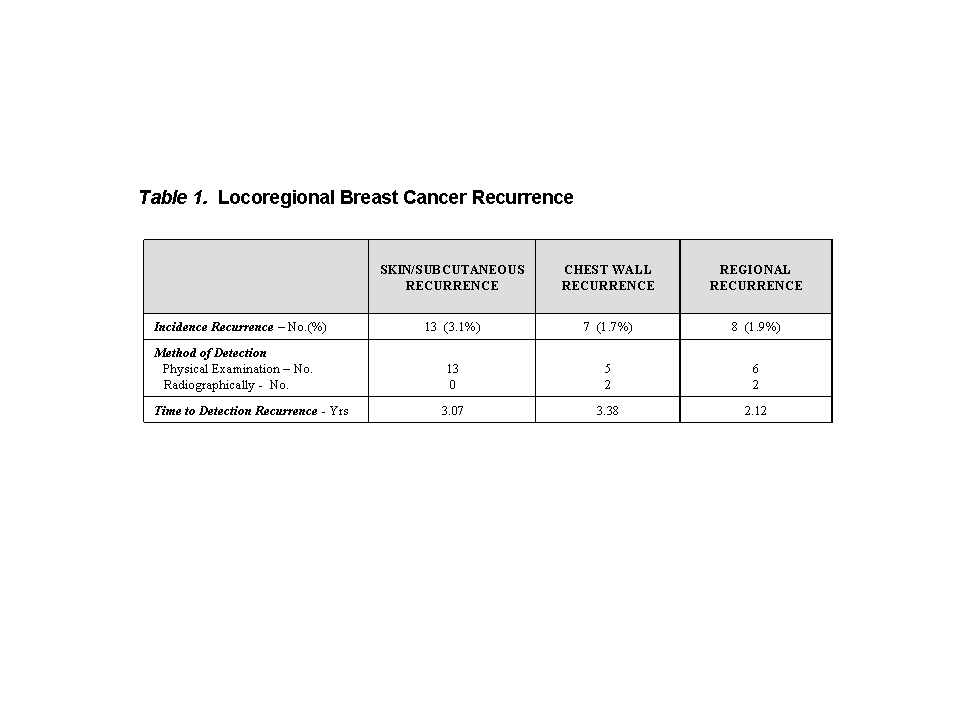Tuesday, September 27, 2005
8586
Breast Cancer Recurrence Following Prosthetic, Postmastectomy Reconstruction: Incidence, Detection and Treatment
INTRODUCTION:
Locoregional breast cancer recurrence following mastectomy has been associated with a worse disease-specific survival. A paucity of data exists, however, regarding the impact of prosthetic reconstruction on the incidence, detection and treatment of locoregional breast cancer recurrence. Thus, the purpose of this study was to evaluate the influence of prosthetic reconstruction on the detection and management of locoregional recurrence following mastectomy for invasive breast cancer.
METHODS:
A retrospective review of all immediate, prosthetic reconstructions following mastectomy for invasive cancer of the breast from 1995 to 1999 was performed. Demographic, oncologic and reconstructive data was obtained from patients' medical records. Only patients with at least two years of follow-up and/or patients who had a breast cancer recurrence within two years of their primary breast cancer were included. Patients were excluded if they had: pathology representing LCIS/DICS only, sarcoma/angiosarcoma or phyllodes; stage IV disease at presentation; synchronous bilateral breast cancer; and/or, a history of breast cancer prior to mastectomy.
RESULTS:
Between 1995 and 1999, 414 immediate, implant-based reconstructions were performed in 362 patients. Mean patient age was 43.2 years (range, 24.9-71.1). Mean follow-up was 4.6 years (range, 0.7-8.4).
The incidence of locoregional recurrence (LR) following implant-based reconstruction was 6.8 % (28 patients). The staging distribution was as follows: Stage I(7), IIA(4), IIB(13), IIIA(2) and IIIB(2). In total, there 13 were skin/subcutaneous, 7 chest wall, and 8 axillary/supraclavicular recurrences. Eighty-six percent (24/28) of LR recurrences were initially detected by inspection and/or palpation; 14.3 % (4/28) of LR recurrences were initially detected radiographically (CT scan 3; bone scan 1). There were no locoregional recurrences obscured by the presence of a permanent implant, either clinically or radiographically.
Mean time to LR recurrence was 2.7 years (range 1- 7.2). Treatment of LR recurrence included: surgical excision (17); chemotherapy (7); and, radiotherapy (5). Permanent implants were removed in three patients following: the development of a peri-prosthetic infection during radiotherapy for recurrence (1) and patient request (2). Nine patients with LR recurrence died of disease, a mean 1.8 years (range 0.2-5.6) after the development of recurrence.
CONCLUSION:
This series suggests that prosthetic breast reconstruction does not hinder the detection of locoregional breast cancer recurrence. In the majority of patients, management of the locoregional recurrence does not necessitate removal of a permanent prosthesis.

View Synopsis (.doc format, 71.0 kb)
See more of Breast (Cosmetic and Reconstructive)
Back to 2005am Complete Scientific Program
